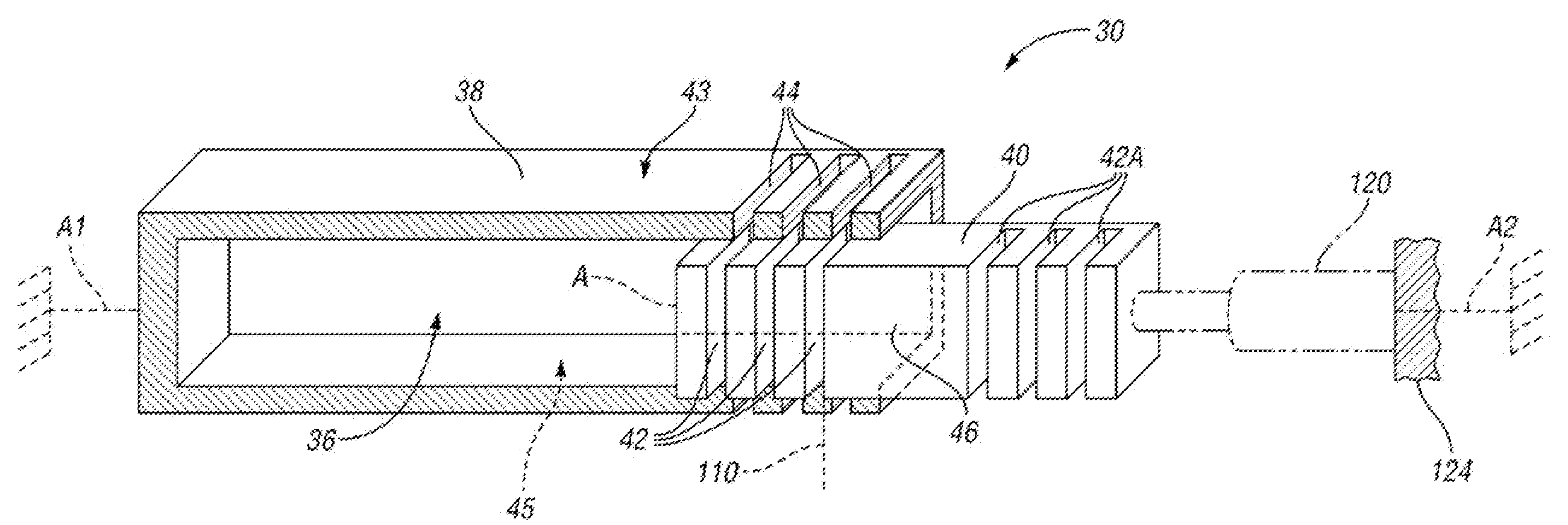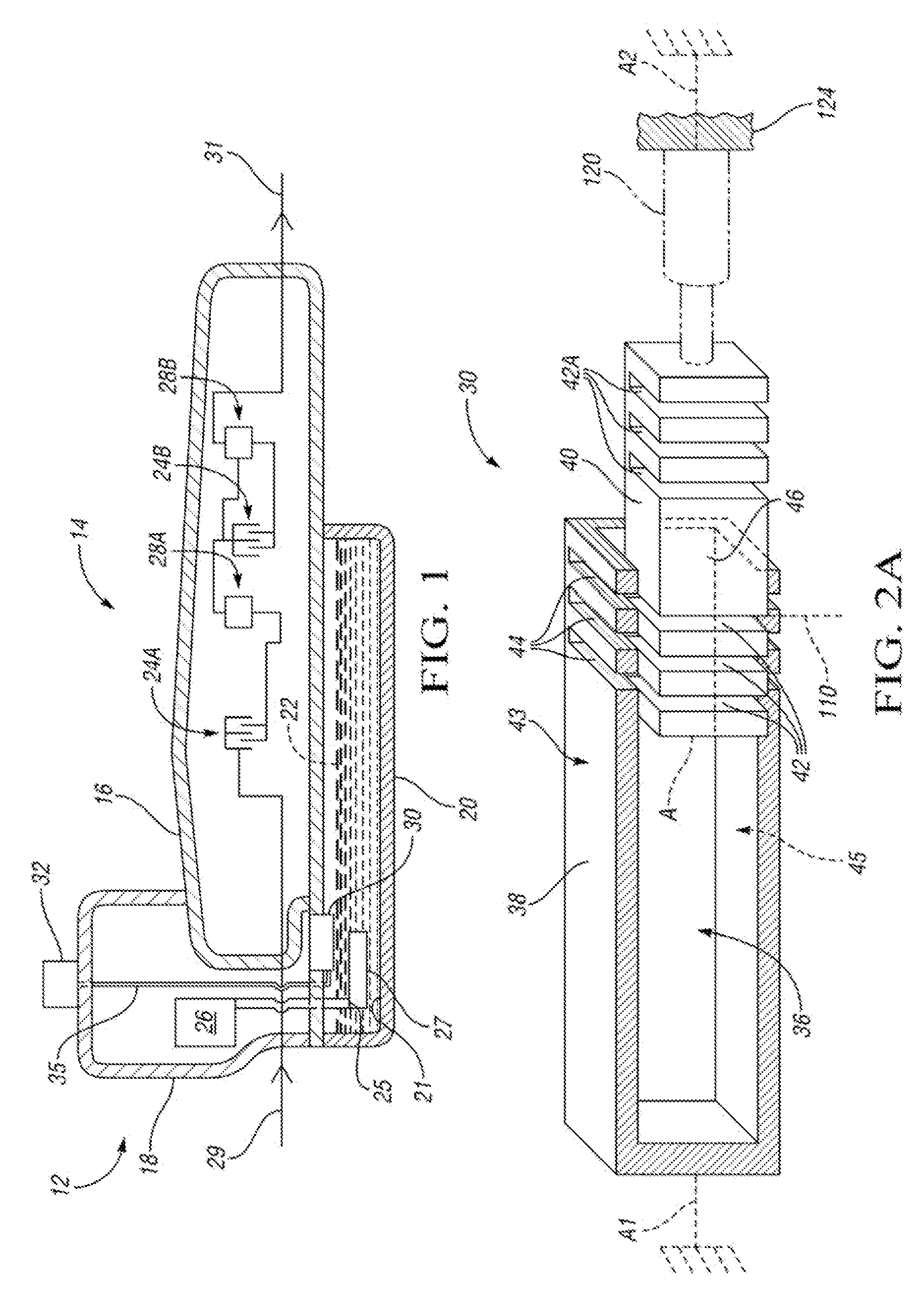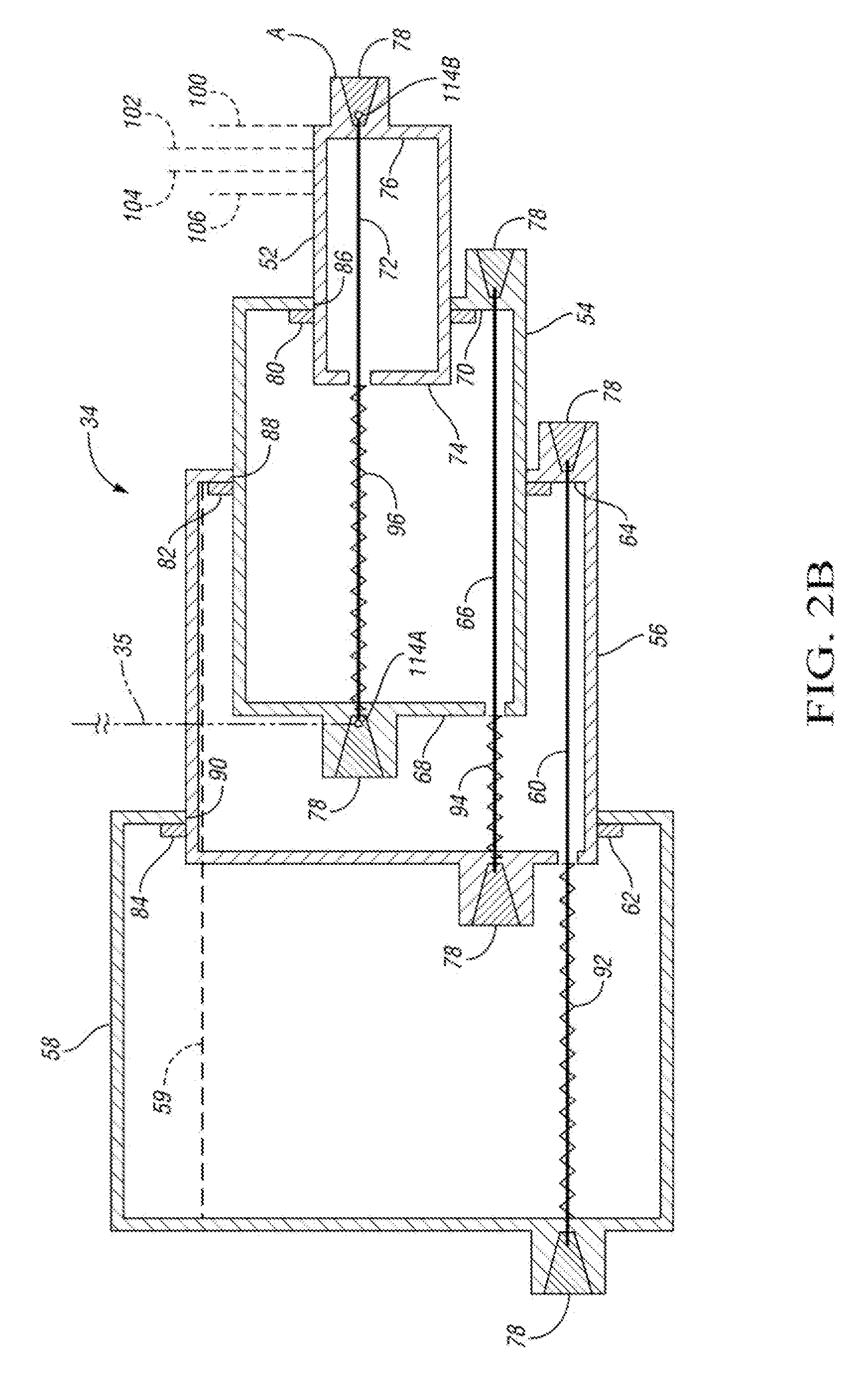Flow-regulating valve and oil level control system using same
a technology of flow-regulating valves and oil level control systems, applied in the direction of valve details, valve arrangements, multiple-way valves, etc., can solve the problems of pump suction loss and air entering the transmission fluid circuit, and achieve the effect of opening or closing more quickly
- Summary
- Abstract
- Description
- Claims
- Application Information
AI Technical Summary
Benefits of technology
Problems solved by technology
Method used
Image
Examples
first embodiment
of a Flow-Regulating Valve
[0021]Referring to FIGS. 2A and 2B, a first embodiment of the flow-regulating valve 30 is shown. The portion of the flow-regulating valve 30 shown in FIG. 2B is a telescoping active material actuator portion 34 that connects with the portion shown in FIG. 2A at the surface labeled A in both FIGS. 2A and 2B, with the telescoping actuator portion 34 preferably sized to fit within the cavity 36 formed within a fixed member 38 (also referred to herein as the second member).
[0022]Referring to FIG. 2A, the valve 30 includes a first, movable member 40 that is positioned for telescoping movement within the second, fixed member 38 due to actuation of the telescoping active material actuator portion 34. The fixed member 38 has a hollow rectangular shape and the movable member 40 has a solid rectangular shape sized to fit within the hollow portion of the fixed member 38. Within the scope of the invention, the fixed member 38 and movable member 40 may have many other c...
second embodiment
of a Flow-Regulating Valve
[0057]A second embodiment of a flow-regulating valve within the scope of the invention includes the first and second members 38 and 40 of FIG. 2A with respective openings 44, 42, 42A, as well as the telescoping active material actuator portion 34 of FIG. 2B. However, the active material component 72 is passively activated by surrounding temperature in this embodiment (rather than by resistive heating) and the activation of the three active material components 60, 66 and 72 only move first member 40 to the blocking position in which solid portion 46 of first member 40 aligns with openings 44 in fixed second member 38 to prevent fluid flow through flow-regulating valve 30. When a predetermined condition occurs, such as a high acceleration turn, a solenoid 120, rather than an active material component, acts as an actuator, and is controlled via an electronic control signal from controller 32 to push the first member 40 so that openings 42A align with openings ...
third embodiment
of a Flow-Regulating Valve
[0058]Referring to FIG. 3, another embodiment of a flow-regulating valve 230 allows the active material actuator portion 34 of FIG. 2B to be packaged remotely from the first movable member 240 and second fixed member 238 by utilizing a connector 242 between the first movable member 240 and the active material actuator assembly portion 34, which has surfaces A in FIG. 2B connected at end AA of the connector 242. Accordingly, more flexibility in sizing of the active material actuator portion 34 is available, as it need not fit within a cavity in the fixed second member 238 as it had to fit within fixed second member 38 in the embodiment of FIG. 2B. The passive activation of the active material components 60, 66 and the active actuation of active material component 72 (i.e., the actuator) functions the same as described with respect to the first embodiment. Respective openings shown in the first member 240 and second member 238 align and misalign in response t...
PUM
 Login to View More
Login to View More Abstract
Description
Claims
Application Information
 Login to View More
Login to View More - R&D
- Intellectual Property
- Life Sciences
- Materials
- Tech Scout
- Unparalleled Data Quality
- Higher Quality Content
- 60% Fewer Hallucinations
Browse by: Latest US Patents, China's latest patents, Technical Efficacy Thesaurus, Application Domain, Technology Topic, Popular Technical Reports.
© 2025 PatSnap. All rights reserved.Legal|Privacy policy|Modern Slavery Act Transparency Statement|Sitemap|About US| Contact US: help@patsnap.com



